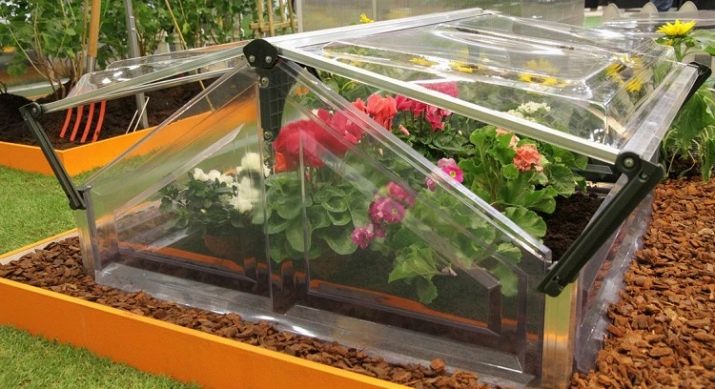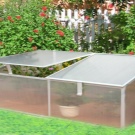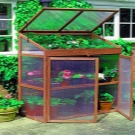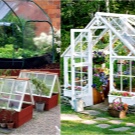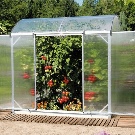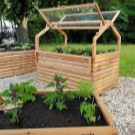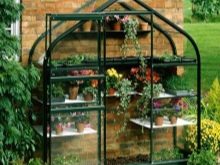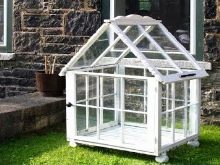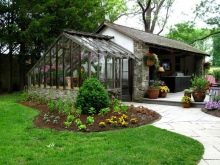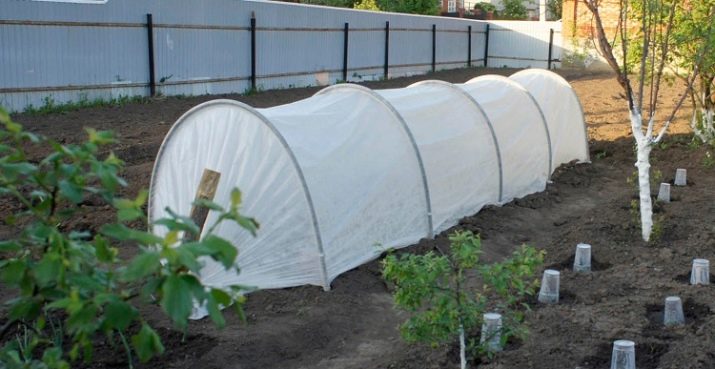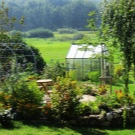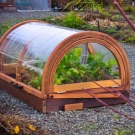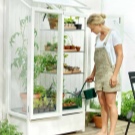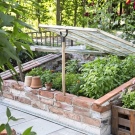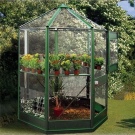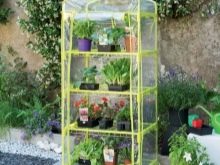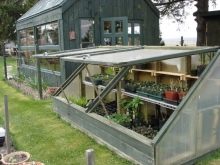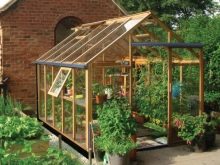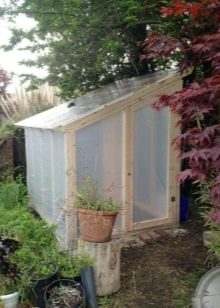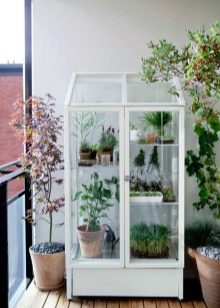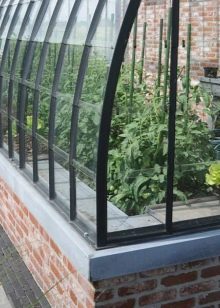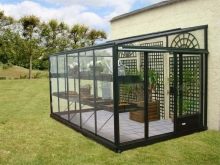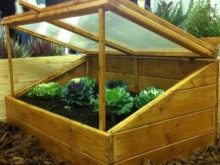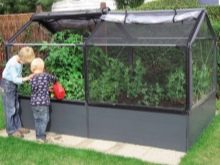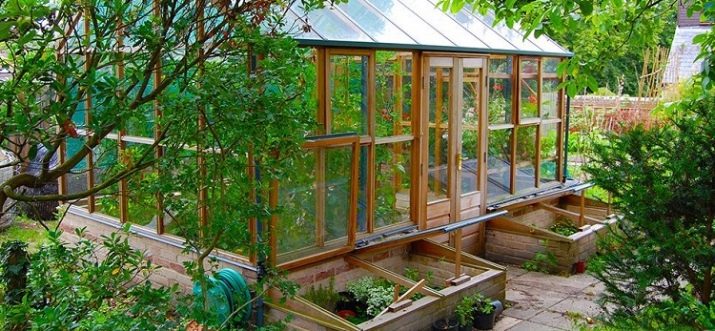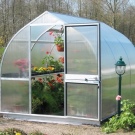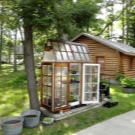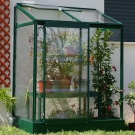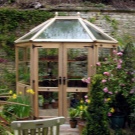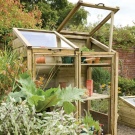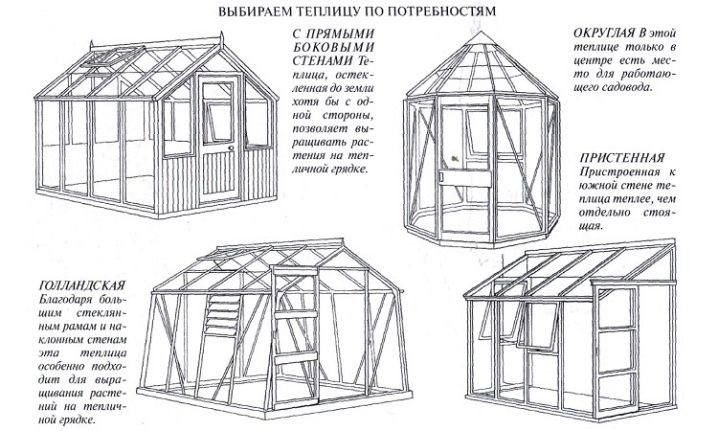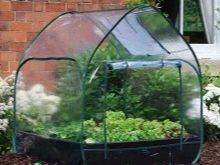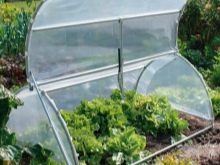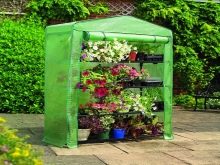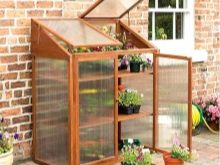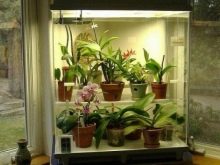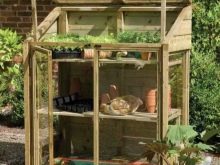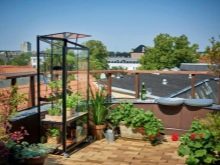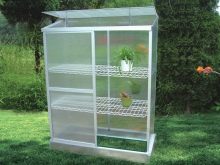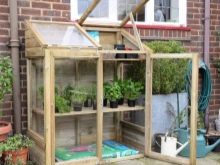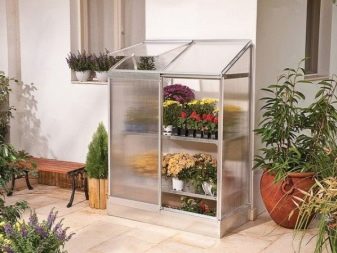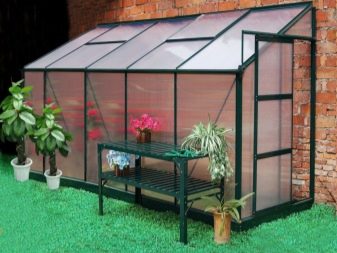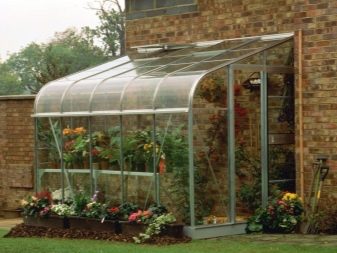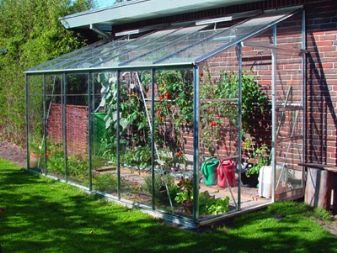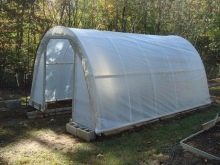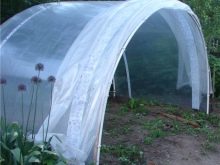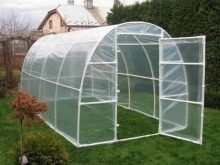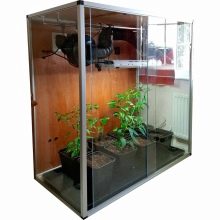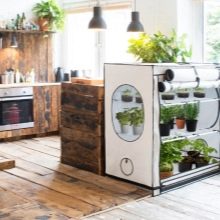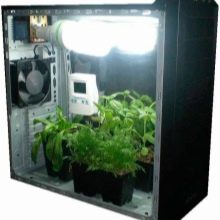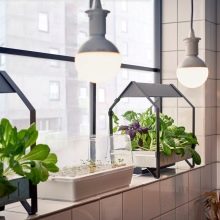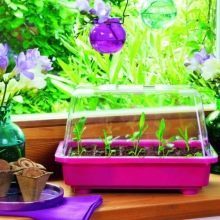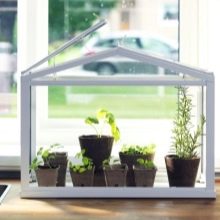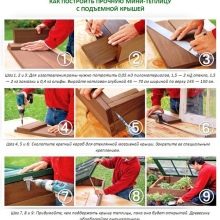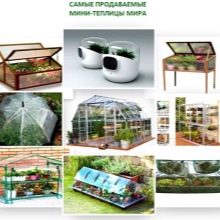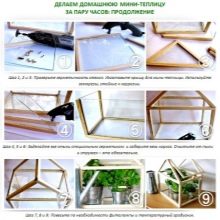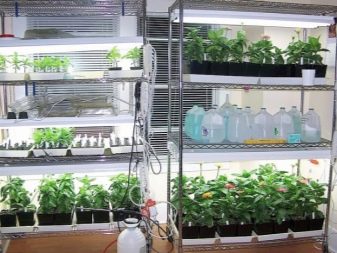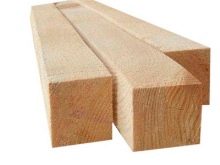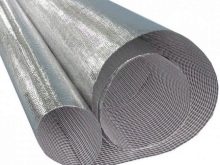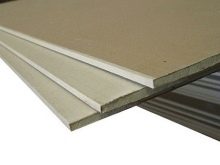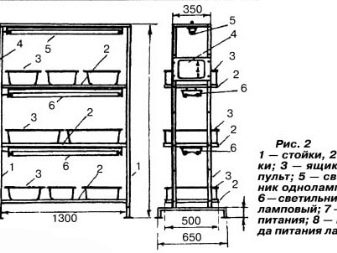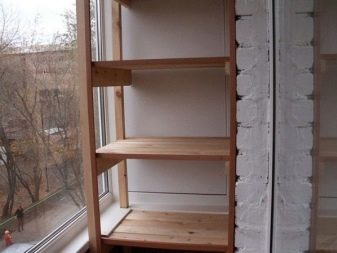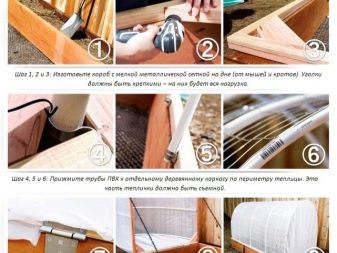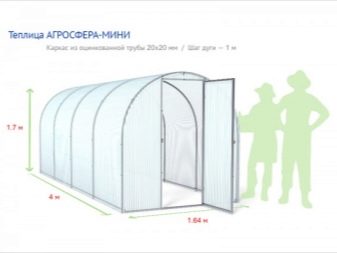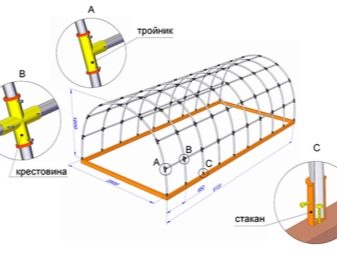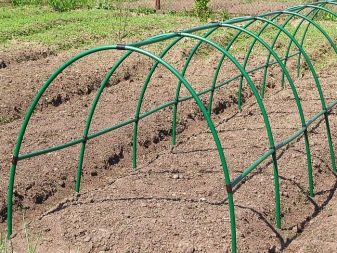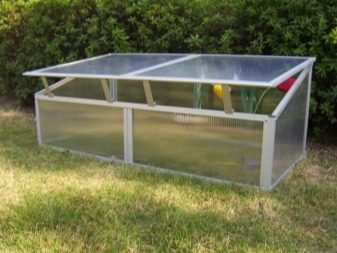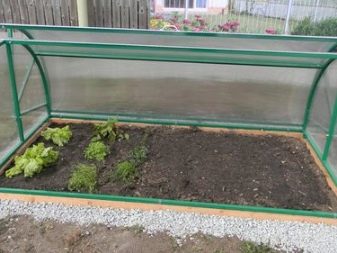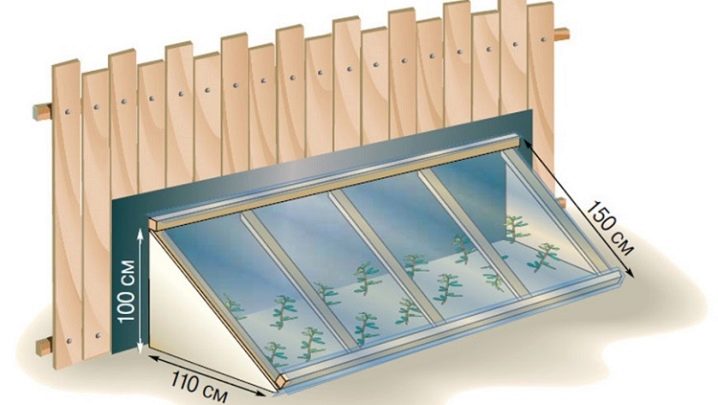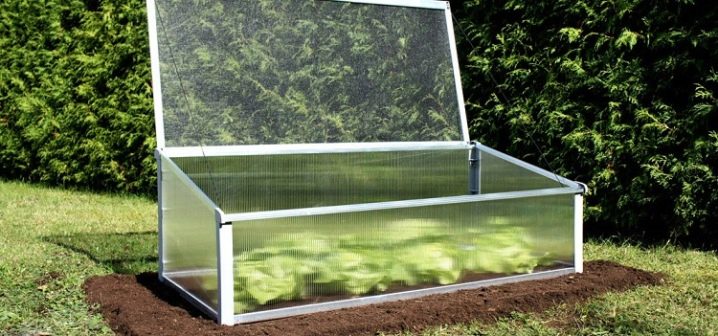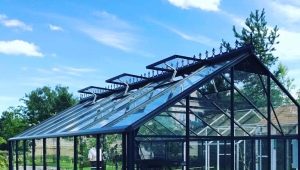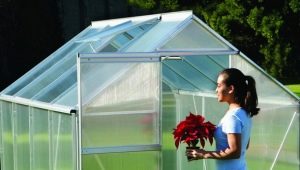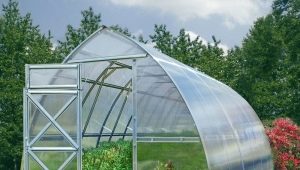Mini-greenhouses: options and features of the device
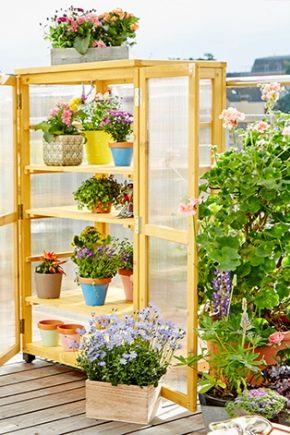
Many gardeners do not pursue the goal of growing huge yields, so gardeners simply do not need big greenhouses. For a small number of beds, a neat mini-greenhouse, which is quite enough for personal needs, is best suited. Often, such structures are made by people with their own hands, referring to various materials.
Today we will examine in detail what are the features of such structures, how they should be equipped according to all the rules.
Features and requirements
In our time, the presence of a greenhouse on the territory of a private or country house will not surprise anyone. Such constructions are very common and may have a variety of modifications.In larger areas, they often have large structures in which it is possible to grow an impressive amount of various plants. If the land is not so much, and the owners do not need a lot of landings, they usually turn to mini-versions of these buildings.
Making a small greenhouse is not as difficult as it may seem at first glance. For such works are taken by many owners who want to save on the services of experienced craftsmen who make similar designs to order. If done correctly, the result will be a durable and efficient structure, under which many different plantings will grow.
But before you start building a mini-greenhouse, it’s very It is important to familiarize yourself with a number of important requirements for this structure:
- a high-quality compact greenhouse must be distinguished by good light conductivity, otherwise the plants will not be very comfortable in it;
- when making a small greenhouse, it is important to consider that it must always have free access to the plants, otherwise it will be rather difficult to care for them;
- the inside of a small greenhouse must be ventilated;
- the structure must be as strong and executed as possible, “otherwise it may suffer along with landings during strong winds and precipitation;
- The greenhouse must be aesthetic so as not to spoil the existing land and house.
If you comply with all the above requirements, then a mini-greenhouse will turn out not only convenient and efficient, but also quite attractive. A well-made construction can transform a plot, organically complementing it.
The main advantages of compact greenhouses include the following:
- similar buildings can be placed not only at the dacha, but also directly in the city apartment;
- mini-greenhouse is able to protect the planting from negative external factors and precipitation, which can act on plants destructively;
- in the interior of such buildings the most comfortable microclimate is formed, the optimum level of humidity and temperature;
- having such a structure, the owners will be able to temper the planted crops;
- It is much easier and easier to care for plants growing in the greenhouse;
- In most cases, such erections cost the owners inexpensively, especially if you make them yourself.
However, it is important to take into account another important feature of such models - it is impossible to grow plants in them that are distinguished by high height. In such conditions, such cultures will simply be too crowded. Mini-greenhouse is only suitable for growing greens, berries and other low-growing plants.
Location
Mini-greenhouse can be easily placed on the summer cottage, which does not have a large area. Such a building will not occupy a lot of free space, but the owners will be able to independently grow low-growing crops on their territory. Of course, no one forbids planting and tall landings, but in time they will need to be transplanted to a new place where they will not be too low and cramped.
If you plan to put a modest greenhouse in a normal city apartment, then its specific location will depend on the time of year, the level of illumination of the selected location, as well as the possibility of supplementing it with artificial lighting.
The best solution in this case would be a glazed loggia or balcony. In such circumstances, home mini-greenhouses place in most cases.
The difference between greenhouse and greenhouse
Many gardeners and owners of private houses do not share such concepts as greenhouse and greenhouse. In fact, these two structures - this is not the same thing. To understand what their differences are, you need to give basic definitions. Thus, a greenhouse is a compact mobile building without heating, which is intended for growing seedlings and protecting it from all sorts of negative external factors. Subsequently, grown-up planting leaves the greenhouse and transplanted directly into the open ground.
A greenhouse is a structure with heating, in which there is a possibility of organizing the growth of crops throughout the year, from planting seeds to direct harvesting.
And now it is necessary to analyze in detail how the greenhouse specifically differs from a greenhouse.
- A greenhouse differs from a greenhouse in that it has a more thoughtful and complicated structure. The construction itself must be stronger and more reliable.
- Greenhouses in many cases, put on a foundation, equip the walls and roof. Greenhouses do not need a foundation, and their construction is simpler.
- A greenhouse is a mobile product of small size, whereas greenhouses can be both small and rather large, and it is much more problematic to rearrange them from place to place.
- A greenhouse absorbs heat by using the greenhouse effect (involving sunlight) and the bio-fuel that is buried in the soil, that is, manure or compost. The greenhouse can be heated not only thanks to the sunlight, but also to water or steam heating, as well as an electric heater.
- The greenhouse is not designed for the entire cycle of crop growth. In most situations, such a structure is reserved exclusively for the cultivation of greenery and seedlings, with its further movement into open soil. In addition, a greenhouse can protect plants only from minor frosts. A greenhouse, especially one that is qualitatively heated, may become a longer shelter for plants. They can grow in such conditions and bear fruit year-round, and they will not be afraid of severe frosts.
As you can see, there is a lot in common between a greenhouse and a greenhouse, but also there are plenty of differences, so do not confuse these structures.
Types and characteristics
Small greenhouses are different. Consider what types of such structures are, what characteristics they possess.
Portable
Many users make home-made portable greenhouses. Such mini-designs are made quickly and easily. It is most convenient to use them for the purpose of growing greens in boxes and hardening seedlings. If the bottom of the portable models do not overlap with mesh material, the greenhouse can also be used for plants that like heat and have been planted in the ground (to protect against returnable cold).
Small portable greenhouses are good because they are characterized by high-quality light. In addition, with their use, access to all plantings will remain open and quite comfortable, which is extremely important when properly caring for crops. It is also worth noting that a small portable greenhouse will cost the owners of the cottage inexpensively, since it is unlikely that a lot of material will be needed to make it.
As a rule, portable structures on top are covered with plastic wrap or polycarbonate sheets. As for the foundation, it is not needed for such structures, which is why they become mobile. Preparing such a product, you only need to think about the reliability of fasteners.
Cabinets
Mini-greenhouse can be made in the form of a cabinet. Such a model is good in that it is possible to place many different plants neatly and compactly on several shelves. This makes it possible to get a rich harvest even in the conditions of a city apartment. Fans of flowers often exhibit such showcases in living rooms to decorate and complement the existing interior.
The greenhouse in a simplified format can be as small as possible. In addition, externally similar models often do not differ from standard cabinet furniture. In this, of course, there are pros and cons. Many people do not make such designs on their own, and buy ready-made options. The most inexpensive are designs with shelf-nets.located in the inner part of the frame made of metal, covered with transparent fabric and lightning.With the use of these options, it is possible to change the air access to the landings (by fastening and unzipping). In addition, it is convenient to care for plants with such products.
There are also more modern and well-designed greenhouse cabinets, equipped with a ventilation system, heating and other necessary functions. But such instances are many times more expensive than usual, so people turn to them less often.
Brand greenhouse cabinets are often complemented by wheels, with which they can be moved from place to place when needed. In addition, it is permissible to take them to the country or to remove to the loggia / balcony.
Walls
Small size greenhouses can be attached to the wall of a residential building on which sunlight gets. In the West, such a decision is very often addressed, but in Russia - in rare cases. This copy has plenty of advantages, and the main one is that the wall greenhouse occupies a minimum of free space.
The wall, located on the sunny side, accumulates heat in sufficient volumes necessary to form the most comfortable microclimate in the inside of a small extension.But here we must not forget that the heat will also be transferred to plants from the walls and at night. This feature leads to the fact that the vegetation of plants is stretched. However, it should be noted that modest-sized greenhouses will not be able to produce such a crop, which would be enough for the whole family.
Often, small wall greenhouses are used as spectacular scenery of the site, especially if you grow flowers in them. It will only be necessary to think of harmonious flower ensembles that will look bright and original in a glazed house.
Film
Film greenhouses of small dimensions are very popular today. Such options have both positive and negative sides. Many buyers are attracted by the fact that the film for these structures is very inexpensive, and it is easy to install it on a frame basis. When it is necessary to ventilate the landing, you can also remove the filmy coating easily and quickly, without exerting any extra effort. However, it must be borne in mind that material can not boast of sufficient strength - it can be accidentally damaged. In addition, these structures do not serve as long as we would like, so they have to be updated from time to time.
At the time of the winter season, the film from such a greenhouse is required to be removed from the body base, because under the weight of snow precipitation it will simply burst. That is why these models are recommended to operate only in the warm season.
In case of frosts, it will not be possible to keep the heat under the film, so for the year-round plant maintenance it is better to choose another option.
Automatic
Greenhouses are not only simple, but also high-tech. These include automatic designs that look like cabinets. Similar models are also called growboxes. Usually they are planted in small plants. The ideal atmosphere in these buildings is formed artificially. These models work with the involvement of fans, lamps, timers, filters, voltage relays and other useful devices.
From the side, the construction can look like a standard piece of furniture in a room or be something like a hut made of special textiles - such options are called grooters.Despite their functionality and ease of use, these models are rarely bought, because they are quite expensive.
Many users, after weighing all the pros and cons, as well as having calculated all the waste, come to the conclusion that growing plants in standard small greenhouses will be more profitable and less expensive.
Decorative
Decorative varieties of mini-greenhouses are designed not only to cope with their main function, but also to decorate the existing situation (whether it is a summer cottage or a living room in an apartment). Apply them to grow indoor plants. For more practical purposes, these models are hardly suitable. - it is extremely important to consider when choosing a suitable design.
Decorative heifers can have very modest dimensions and easily fit on a window sill or table. Often, these models create their own hands, using small aquariums, or even simple glass cans. At the bottom of the selected container, a drainage layer is organized, some earth is poured on it, and then they start planting flowers. In the resulting homemade “house”, the plants that feel as slow as possible will feel best.
A decorative variety of a small greenhouse is not only capable of providing comfortable conditions for indoor plants, but can also become a real decoration of the interior. Moreover, the style of the situation can be any, from natural “eco” to restrained minimalism.
How to make yourself?
Many users do not want to spend money on the services of greenhouse manufacturers or go to specialized outlets, instead choosing an independent manufacturer of such a design. This decision is quite justified, because it is quite simple to make a small greenhouse with your own hands, and it will not require big expenses.
Consider the order of work on the manufacture of the most popular and popular models of greenhouses.
Rack with backlight
A well-equipped illuminated rack can be a great solution before the start of the season in the conditions of the summer cottage. Make such models from a variety of materials. For example, You can use metal profiles, pipes made of plastic or wood. It is worth choosing such raw materials for construction, which will be the most convenient and familiar to work with.The rack will be a structure that consists of a certain number of shelves located one above the other.
If there is a lot of free space in a dwelling, then you can build a stationary model. Before you make such a rack, you need to make its design and scheme with an indication of all dimensional parameters.
For the construction of mini-greenhouses in the format of the cabinet will need:
- timber;
- drywall;
- profile corner;
- foil.
In addition, you will need a hacksaw, drill, hammer, nails or screws.
First, prepare the side wall of the future rack. You need to attach the crossbeams to the vertically directed bars, maintaining a step of 60 cm. Thus, you get the basis for the shelves. Starting crossbar should be at a distance of 15-20 cm from the floor.
The second half of the structure is constructed in the same way. Between the supporting parts it is necessary to fix the shelves of sheets GKL. From above, 2 crossbars are fastened to which the seedling bulbs will then be attached.
The inner part of the rack must be sheathed with foil for additional light efficiency. Then over each shelf must be installed on a pair of lamps.They must be quite bright, but not hot, otherwise the leaves of the plants may suffer. Similarly, a more durable and reinforced metal structure can be made.
With pipe frame
If you are going to equip a mini-hothouse at the dacha, then the existing bed itself can be surrounded by a wood frame structure, and its upper part, which will be responsible for creating a comfortable atmosphere, made of plastic pipes and covered with foil. It is advisable to give preference to plastic pipes, because of them it is possible to make the construction of any dimensions.
The very shape of the mini-greenhouses can also be almost any, since the pipes easily bend and differ in their diameter. They are connected in different ways, for example, clamps, furniture bolts, and even with ordinary glue. Such structures in the manufacture resemble a designer, which is perfect for garden construction.
A modest greenhouse assembled from plastic pipes will be very light, so it will need to be fixed as firmly as possible on the base.Otherwise, the structure may suffer from the first strong wind.
The framework in the form of an arch for such greenhouses is made by putting on a plastic pipe on a metal pin previously driven into the ground. After that, you will need to bend it and put it on the pin on the other side. So get the right arc. It must be attached to a wooden base on the bracket.
The same method mounts the remaining plastic arches, maintaining the same distance. After that, the end elements of the greenhouse are prepared. You can even build a doorway.
Polycarbonate
Practical polycarbonate greenhouses are very popular today. Such designs can be built for planting a variety of plants, from peppers and cucumbers to decorative and exotic greenery. but It is important to take into account the fact that it is possible to construct such a model only if there is a temperature of at least +10 degrees outside the window. This condition is explained by the characteristics of the material of the planned coating, which can expand and contract depending on weather conditions.
If you build a polycarbonate greenhouse at a higher temperature, the carbonate sheets may be slightly larger than it actually is.When it is cool in the yard, they will simply shrink, which is why the construction will inevitably acquire gaps, which should not be there.
If you build such a greenhouse in winter, then with the arrival of hot days, the structure will simply mow down because of the extended parts - they will no longer fit into the right base for them. As a result, the construction will have to be redone.
To build a greenhouse from polycarbonate, you need the following components:
- sheet of plywood for the construction of the bottom;
- bars for fastening roof elements;
- polycarbonate itself;
- self-tapping screws.
In order to build a frame for a small polycarbonate greenhouse, it is necessary to prepare bars of medium thickness. They are fastened end-to-end, using screws. The sides will be strapping. To the latter will be attached truss elements. They are built in such a way that then turned out a neat roof with two ramps. It is covered with polycarbonate, fixing individual segments with the same screws.
From the front halves of the building do folding doors. Without them, the structure can not do, because these details will be necessary for airing the inside of the greenhouse.It is possible to attach casters to the resulting “house”, and to lay a special film on the bottom, on which a small layer of earth is then poured.
On this mini-greenhouse made of polycarbonate can be considered complete. The same way you can build a building with a roof that has one ramp, or in the form of a small transparent "chest" with a flip-type lid.
Useful tips
If you want to buy an automatic greenhouse, but are not willing to pay a large amount for it, you can get by with the purchase of a ready-made kit for its creation. These are sold in special stores. They are often collected at home in old cabinets or refrigerators. The result is effective, but not very expensive construction.
If you do not want to build a greenhouse with a film or polycarbonate because of their unattractiveness, you can turn to more aesthetic options of glass and aluminum. Consider that greenhouses of modest size will quickly overheat in the suntherefore, they are very often used for spring germination of seedlings.
When mounting a small polycarbonate greenhouse, sheets of this material should be laid up with a UV protective surface.Determine the direction of laying will turn out, paying attention to the labeling, which is usually affixed to a protective film. Home greenhouses, exhibited in the conditions of the apartment, can be supplemented with artificial lighting devices, especially if there is little natural light in the dwelling. But note that the light should not be too powerful and hototherwise the leaves of the plantings may suffer greatly from this.
In the next video you will find the cover of a homemade mini-greenhouses.
